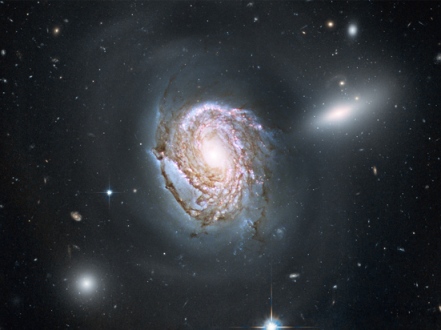Milky Way shuts down star formation in neighboring dwarf galaxies
 Washington, Oct 16 : New radio observations have revealed that within a well-defined boundary around our galaxy, dwarf galaxies are completely devoid of hydrogen gas because of the Milky Way.
Washington, Oct 16 : New radio observations have revealed that within a well-defined boundary around our galaxy, dwarf galaxies are completely devoid of hydrogen gas because of the Milky Way.
Approximately 1,000 light-years from the edge of the Milky Way's star-filled disk to a point that is thought to coincide with the edge of its dark matter distribution, dwarf spheroidals become vanishingly rare while their gas-rich, dwarf irregular counterparts flourish.
Researchers believe that by bringing to bear the combined power of the GBT (the world's largest fully steerable radio telescope) which are the highest sensitivity of their kind ever undertaken, up to a certain distance from the galactic disk, the halo is dense enough to affect the composition of dwarf galaxies. Within the "danger zone," the pressure created by the million-mile-per-hour orbital velocities of the dwarf spheroidals could actually strip away any detectable traces of neutral hydrogen. The Milky Way thus shuts down star formation in its smallest neighbors.
The Milky Way Galaxy is actually the largest member of a compact clutch of galaxies that are bound together by gravity. Swarming around our home galaxy is a menagerie of smaller dwarf galaxies, the smallest of which are the relatively nearby dwarf spheroidals, which may be the leftover building blocks of galaxy formation. Further out are a number of similarly sized and slightly misshaped dwarf irregular galaxies, which are not gravitationally bound to the Milky Way and may be relative newcomers to our galactic neighborhood.
These observations therefore reveal a great deal about size of the hot halo and about how companions orbit the Milky Way
The paper published in the Astrophysical Journal Letters.(ANI)